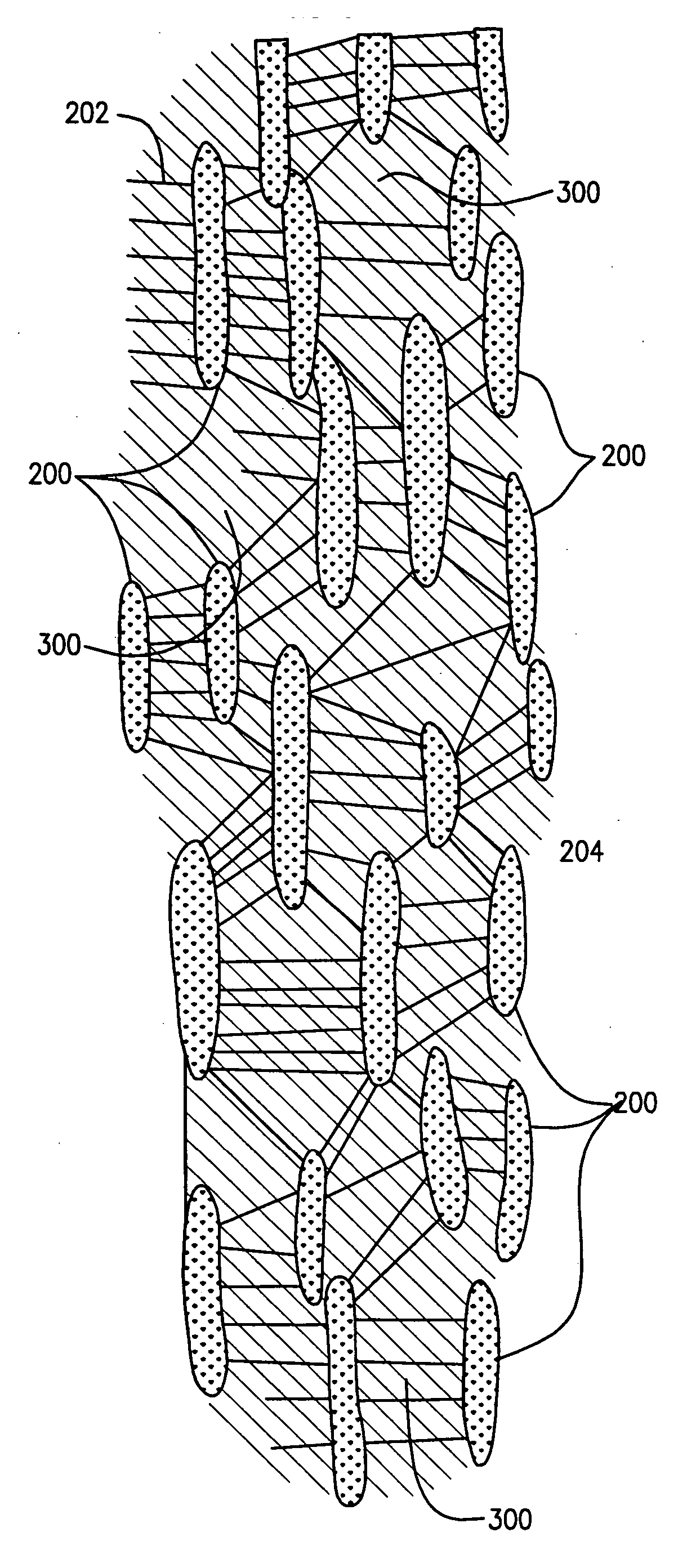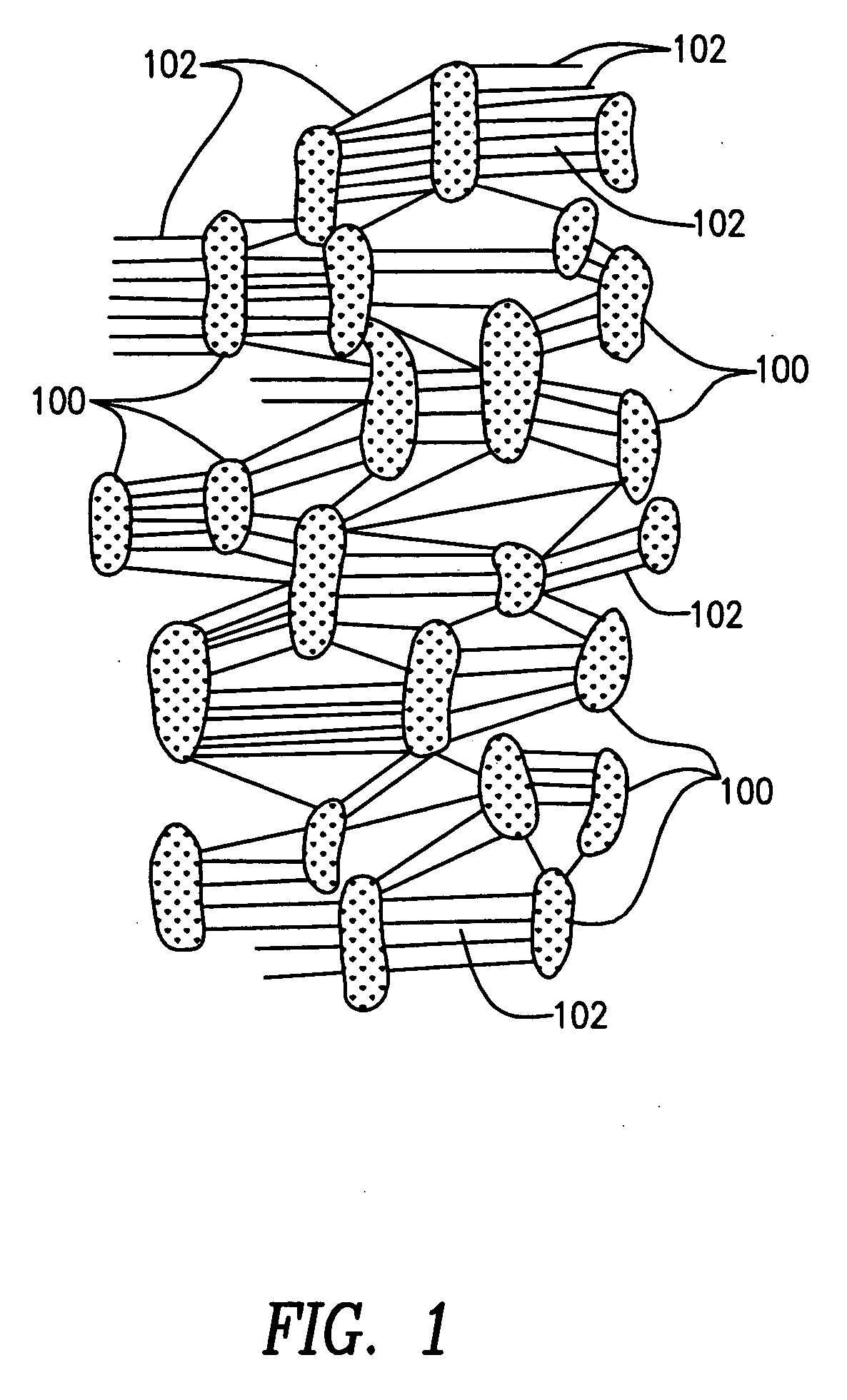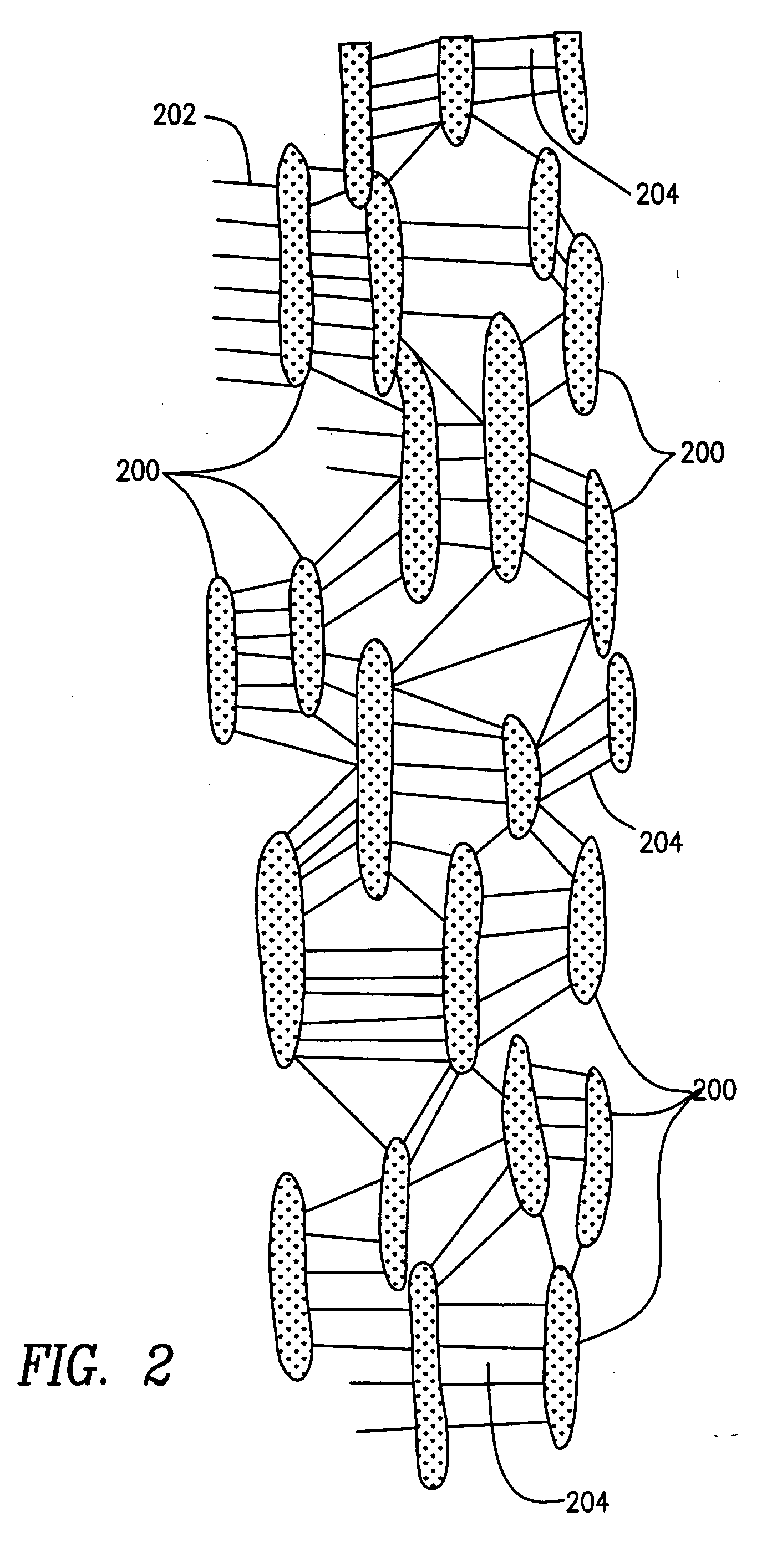Optimally expanded, collagen sealed ePTFE graft with improved tissue ingrowth
a graft and tissue technology, applied in the field of ptfe grafts with enhanced tissue ingrowth, can solve the problems of large reduction of lumen diameter, excessive blood loss, initimal hyperplasia at the anastomosis, etc., to promote enhanced transmural cell growth and tissue incorporation, support transmural tissue growth, and improve patency rate
- Summary
- Abstract
- Description
- Claims
- Application Information
AI Technical Summary
Benefits of technology
Problems solved by technology
Method used
Image
Examples
Embodiment Construction
[0031] While this invention may be satisfied by embodiments in many different forms, there will be described herein in detail, preferred embodiments of the invention, with the understanding that the present disclosure is to be considered as exemplary of the principles of the invention and is not intended to limit the invention to the embodiments illustrated and described.
[0032] The prosthesis of the preferred embodiments of the present invention is a tubular structure which is particularly suited for use as a vascular graft. The prosthesis is formed of extruded polytetrafluoroethylene (PTFE) as PTFE exhibits superior biocompatability.
[0033] PTFE is particularly suitable for vascular applications as it exhibits low thrombogenicity. Tubes formed of extruded PTFE may be expanded to form ePTFE tubes where the ePTFE tubes have a fibrous state which is defined by elongate fibrils interconnected by spaced apart nodes. Such tubes are said to have a microporous structure, the porosity of w...
PUM
| Property | Measurement | Unit |
|---|---|---|
| average internodal distance | aaaaa | aaaaa |
| diameter | aaaaa | aaaaa |
| diameter | aaaaa | aaaaa |
Abstract
Description
Claims
Application Information
 Login to View More
Login to View More - R&D
- Intellectual Property
- Life Sciences
- Materials
- Tech Scout
- Unparalleled Data Quality
- Higher Quality Content
- 60% Fewer Hallucinations
Browse by: Latest US Patents, China's latest patents, Technical Efficacy Thesaurus, Application Domain, Technology Topic, Popular Technical Reports.
© 2025 PatSnap. All rights reserved.Legal|Privacy policy|Modern Slavery Act Transparency Statement|Sitemap|About US| Contact US: help@patsnap.com



